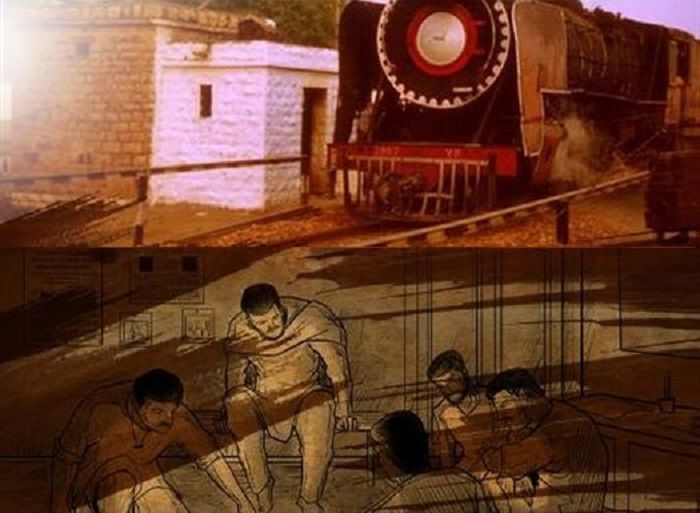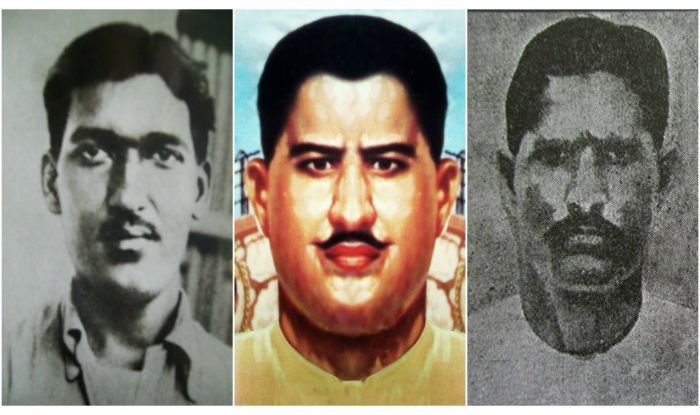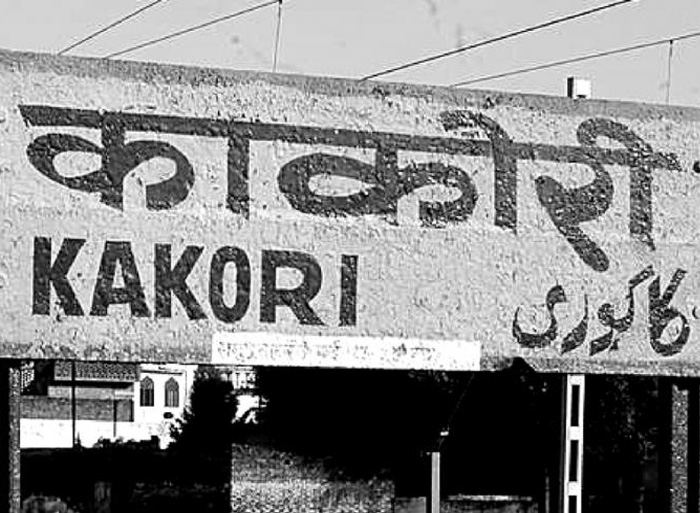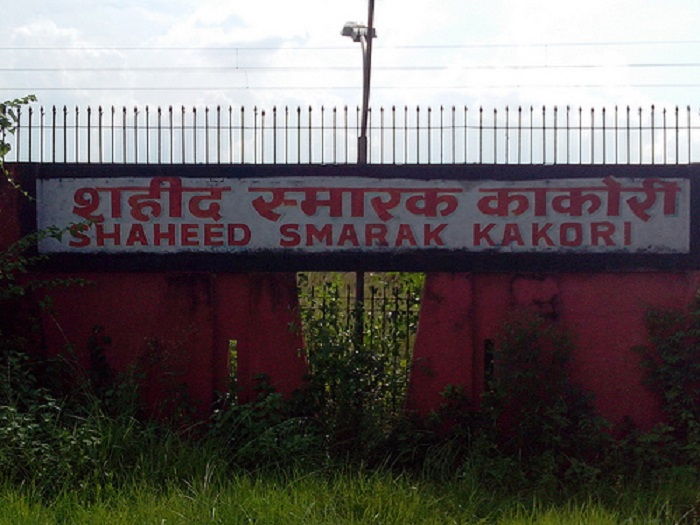Fast Facts
Date: August 9, 1925
Place: Kakori, United Province, British India
Nature of Incident: Train robbery
Conceived by: Ashfaqullah Khan and Ram Prasad Bismil
Associated Organisation: Hindustan Republican Association (HRA)
Victim: Ahmed Ali (unintentional discharge)
The Kakori Conspiracy refers to an armed train robbery that took place on August 9, 1925, at Kakori town in present-day Uttar Pradesh. It also refers to its subsequent court trial that recommended death sentences for four freedom fighters. Conceived by Ashfaqullah Khan and Ram Prasad Bismil of the ‘Hindustan Republican Association’ (HRA), the plan was to rob the money bags kept in the guard’s cabin. The robbed money, which supposedly belonged to the British government, was to be used to fund the HRA. Though the robbery was well-planned, it led to the accidental death of a passenger named Ahmed Ali, which turned the incident from a simple robbery into a case of manslaughter. It also led to the arrest of 40 Indians out of which 28 were put on trial.

Image Credit: https://bulletinofblog.blogspot.com/2015/08/blog-post_9.html
The Train Robbery Incident
The ‘Hindustan Republican Association’ (HRA) was one of the revolutionary organizations that advocated use of force against the British to gain freedom. It needed monetary support to buy weapons and other devices to fight against the British. This prompted its members to carry out the Kakori train robbery, which took place at the town of Kakori in present day Uttar Pradesh.
As per Ashfaqullah Khan and Ram Prasad Bismil’s plan, the train travelling from Shahjahanpur to Lucknow on August 9, 1925, was stopped by one of the HRA members, who pulled the emergency stop chain when the train was approaching Kakori, its final destination. Holed up inside the guard’s quarters were money bags, meant to be deposited at Lucknow. Ram Prasad Bismil and his team of 10 revolutionary activists subdued the guard by threatening him with a German-made Mauser pistol. They then fled away with 8,000 rupees without much of a hassle.
Though the heist was well-planned, it unfortunately resulted in the death of a passenger named Ahmed Ali, who was shot accidentally shot from one of the four Mauser pistols used by the members of the HRA. The death of Ahmed Ali turned the incident from a simple robbery to a case of manslaughter. The men responsible for the heist escaped to Lucknow with the money bags, only to be caught a few days later. The Kakori train robbery would later go down in history books as one of the prominent incidents of the Indian independent struggle.
Aftermath
After the train robbery, the British administration swung into action and launched an intense search to nab those involved in the act. Multiple arrests ensued and within a month from the day of the robbery Ram Prasad Bismil, who had spearheaded the attack was arrested. Ten months after Bismil’s arrest on September 26, 1925, Ashfaqullah Khan too, was arrested in Delhi. As many as 40 people were arrested in connection with the Kakori train robbery. While Ram Prasad Bismil and a few others were charged with multiple offenses, 15 of the arrested were released due to lack of evidence. Two individuals namely, Indu Bhushan Mitra and Banwari Lal turned as approvers and charges against four men were dropped mysteriously amidst speculations that they might have provided vital information to the authorities. At the end of it all, trial against 28 men, which was held in a special court, began on May 21, 1926.
Out of the 28 accused, Rajendra Nath Lahiri, Jogesh Chandra Chatterjee, and Sachindra Nath Sanyal were sent back to prison in Bengal as they were already serving their sentences there in connection with various other cases. While the trial was still on, five of the accused including Chandrasekhar Azad, Sachindra Bakshi, and Ashfaqullah Khan managed to escape from the clutches of the British authorities.

Image Credit : http://www.india.com/news/india/remembering-ram-prasad-bismil-roshan-singh-and-ashfaqulla-khan-the-masterminds-of-kakori-conspiracy-1712508/
Jagat Narayan Mulla, who had a long-standing feud with Ram Prasad Bismil, was appointed by the court as the public prosecutor. Though Jagat Narayan Mulla was Pandit Jawaharlal Nehru’s brother in law, he refused to defend his fellow Indians and expressed no hesitation when he was asked to represent the law of Court as a public prosecutor. In its verdict, the court awarded death sentences to these three while the rest were sentenced to long term imprisonment. Sachindra Bakshi and Ashfaqullah Khan were arrested after the main trial, and a supplementary case was lodged against them. While Ashfaqullah Khan joined Ram Prasad Bismil, Rajendra Nath Lahiri, and Thakur Roshan Singh, who were earlier awarded death sentence, Sachindra Bakshi joined Shachindra Nath Sanyal in the infamous cellular jail at Port Blair (Kālā Pānī).
After the court’s final verdict, the accused were sent away to various jails across the United Province. When they were asked to wear the prison uniform, the arrested revolutionaries protested against it, saying that they must be treated as political prisoners as they were arrested for their struggle against a foreign rule. They also argued that they were entitled to amenities and rights that are usually provided to political prisoners. This argument snowballed and it eventually led to hunger strikes across various jails. From Dehradun District jail to Fatehgarh jail, a total of 13 prisoners began their hunger strike on the same day (April 7, 1927). While Ram Prasad Bismil was on strike from 7th to 11th of April, Vishnu Sharan Dublish and Manmath Nath Gupta were remained on strike for 45 days from 7 April to 22 May. Revolutionaries like Raj Kumar Sinha, Ram Krishna Khatri, and Mukundi Lal remained on strike for more than 30 days. Govind Charan Kar, Ram Dulare Trivedi, and Jogesh Chandra Chatterjee, who were all locked up in Fatehgarh jail, remained on strike for 41 days.

Image Source: firstpost.com
Reaction to the Verdict & Clemency Appeal
The court’s verdict did not go down well with the Indians, who took to streets in protest against the verdict. Political personalities like Motilal Nehru, Muhammad Ali Jinnah, Acharya Narendra Dev, Jawaharlal Nehru, and Lala Lajpat Rai came out in support of the arrested men. A team of eight lawyers, headed by Gobind Ballabh Pant, was assigned to provide legal defense to the revolutionaries. Members of the central legislature came up with a petition to the Viceroy of India to reduce the death sentences to life sentences, but to no avail.
On August 22, 1927, the chief held the original judgment correct. This prompted the members of the legislative council to approach the Provincial Governor of U.P. with a mercy appeal, which too, was dismissed subsequently. On September 9, 1927, a letter was sent from Ram Prasad Bismil to Madan Mohan Malviya, who in turn sent a memorandum to the then Governor General of India and Viceroy, Edward Fredrick Lindley Wood. The memorandum, which had the signatures of 78 Members of Central Legislature, was never considered by Edward Wood. On September 16, the final mercy appeal was sent to the King Emperor and to Privy Council at London with the help of a famous British lawyer named S. L. Polak. Appeals were even sent to Mahatma Gandhi. However, each and every single request was turned down, leading to the execution of the four.

Image Credit : Image Credit : http://www.india.com/news/india/remembering-ram-prasad-bismil-roshan-singh-and-ashfaqulla-khan-the-masterminds-of-kakori-conspiracy-1712508/
While the main architects of the ‘Kakori Conspiracy’ were executed by the British, their ultimate sacrifice for the cause of the motherland made them ‘True Heroes’ in the eye of every Indian. The struggle for independence was picking-up pace and the heroics shown by these young men only inspired hundreds and thousands of other people to give their all for the cause of independence. The mood of the revolutionaries was very well summed-up by Ram Prasad Bismil in these words, which became the anthem of every revolutionary:
“sarfaroshī kī tamannā ab hamāre dil meñ hai
dekhnā hai zor kitnā bāzū-e-qātil meñ hai”


